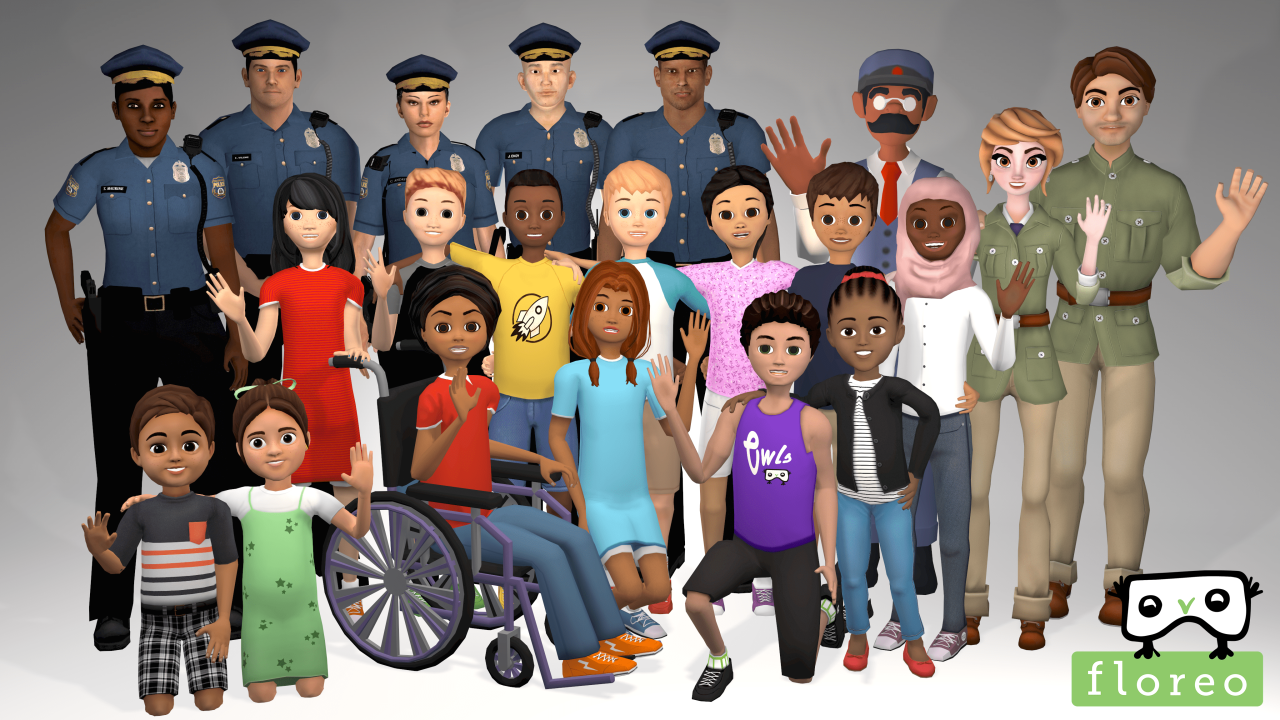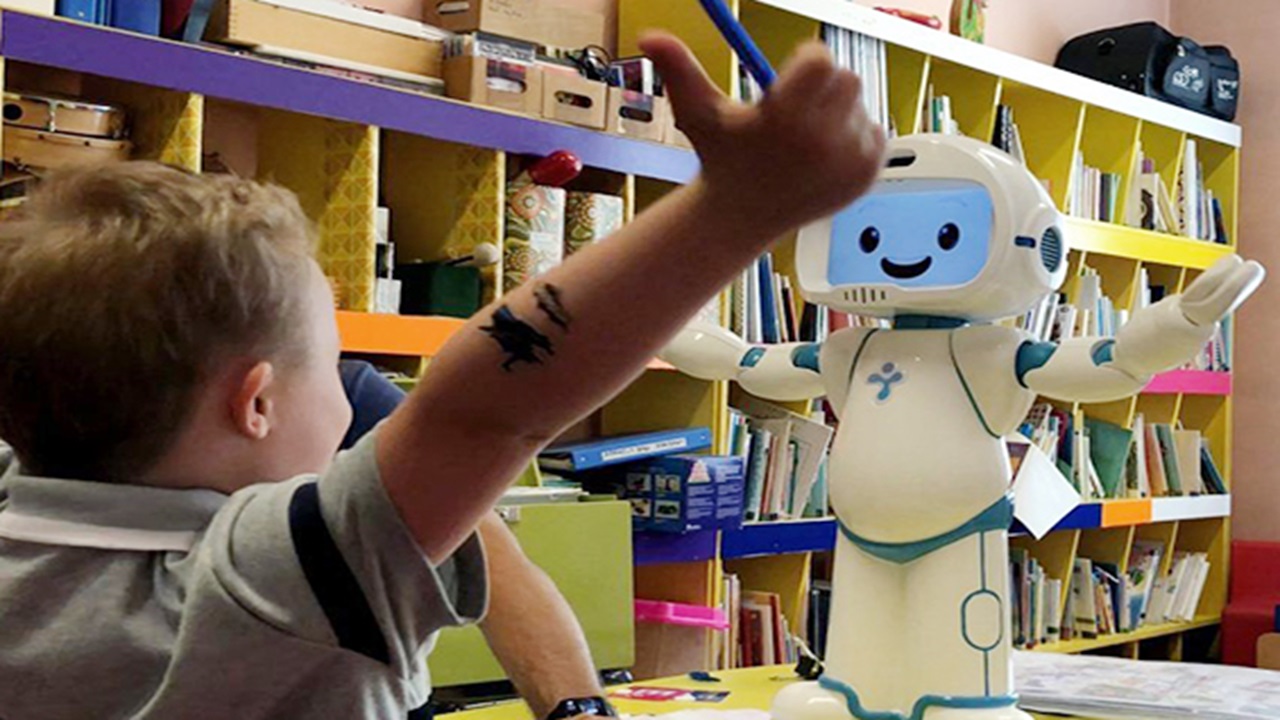by: Husam Yaghi and Mohamed Yaghi
For individuals on the autism spectrum, navigating the real world can be a labyrinth of social anxieties, overwhelming stimuli, and unspoken rules. But on the horizon glimmers a shimmering prospect: the metaverse, a burgeoning realm of virtual and augmented reality offering not just escape, but the potential for connection, exploration, and empowerment.
From Social Cages to Vibrant Communities:
Imagine a world where social anxieties melt away and self-expression reigns supreme. The metaverse throws open the doors to thriving communities built on shared passions and understanding. Customizable avatars shed physical limitations, allowing individuals to express their true selves freely, without fear of judgment. Geographical boundaries dissolve, forging deep connections with like-minded souls across the globe. Picture an autistic artist showcasing their creations in a vibrant virtual gallery, surrounded by a supportive community of art enthusiasts. Or envision a young boy with social anxieties confidently participating in a virtual book club, finding safe spaces to practice communication and build friendships.
Unlocking Learning Potential:
Traditional classrooms can feel restrictive for many autistic individuals who learn best through diverse modalities. The metaverse shatters those walls, transforming learning into an immersive adventure. Gamified therapy interventions make skill development engaging and effective, while VR scenarios provide safe spaces to practice social skills and emotional regulation. Imagine a child on the spectrum navigating an interactive virtual museum, learning about history through captivating 3D exhibits. Or picture an adult practicing social interactions in a simulated workplace environment, gaining confidence for real-world encounters.
Building Bridges, Not Walls:
While the metaverse offers a new frontier for connection and exploration, it’s crucial to remember it’s not a replacement for the real world. The human touch, the warmth of real-world relationships, and the grounding experiences of everyday life remain irreplaceable. The metaverse should be seen as a bridge, empowering individuals to connect, learn, and build confidence in the virtual realm, carrying those skills and newfound self-assurance back into the physical world.
Evolving Hand-in-Hand:
Navigating the metaverse for the autistic community requires a collaborative journey. Developers, researchers, and policymakers must prioritize inclusivity, accessibility, and ethical considerations. Safeguards need to be implemented to protect against privacy breaches and discrimination. The voices and needs of autistic individuals must be at the forefront of shaping this virtual landscape. Together, we can build a metaverse that embraces neurodiversity, celebrates individuality, and empowers individuals on the autism spectrum to connect, learn, and thrive, both online and off.
The Toolbox for a Brighter Future:
Even today, exciting options exist to tap into the metaverse’s potential:
Social Connection and Communication:
- Akili Kare: This mobile app uses gamified exercises to help children with autism develop social and communication skills, like recognizing facial expressions and understanding emotions.
- Proloquo2Go: This AAC (Augmentative and Alternative Communication) app provides a library of symbols and pictures that individuals with speech difficulties can use to communicate their needs and wants.
- Womaze: This platform combines VR technology with therapeutic principles to provide a safe and engaging environment for practicing social interaction and emotional regulation.
Sensory Management and Relaxation:
- Calm: This popular app offers guided meditations, calming music, and nature sounds, creating a relaxing and sensory-friendly environment for managing anxiety and sensory overload.
- Fidget Cube: This tactile stimulation tool provides a variety of textures and buttons to help individuals with sensory sensitivities self-regulate and focus.
Learning and Skill Development:
- Minecraft Education Edition: This version of the popular game offers engaging educational experiences in various subjects, catering to diverse learning styles and encouraging exploration.
- Lumos Labs: This platform uses VR technology to create immersive learning experiences for children with special needs, covering topics like social skills, emotional regulation, and life skills.
- Cognitively Guided Interventions: This program uses individualized learning software to help children with autism improve attention, executive function, and social skills.
Accessibility and Participation:
- Eye gaze technology: Tools like Tobii Dynavox eye trackers allow individuals with motor impairments to control computers and other devices using their eyes.
- Adaptive controllers: These specialized controllers are designed to make gaming and other activities accessible for individuals with physical limitations. Check major gaming console websites like Microsoft or Sony for their offerings.
- Text-to-speech software: Tools like Natural Reader or TextAloud can read aloud digital text, making reading easier for individuals with dyslexia or other reading difficulties. Popular options include Natural Reader and TextAloud .
For the Arabic community:
The metaverse’s potential extends beyond geographic boundaries. For the Arabic community, consider resources like:
Social Connection and Communication:
- BabNoor: This Arabic-language communication app uses picture exchange and voice output to help children with autism develop communication skills. It caters to various Gulf Cooperation Council (GCC) dialects.
- Autism Speaks Middle East: This organization hosts social events and support groups for families with autistic children, fostering connections and community building within the region.
- My Playgroup: This UAE-based program organizes inclusive playgroups for children with and without disabilities, promoting social interaction and understanding.
Sensory Management and Relaxation:
- Sensory Rooms: Several sensory rooms are popping up in clinics and therapy centers across the Middle East, offering a controlled environment with calming visuals, sounds, and textures for managing sensory overload.
- Calm Arabic: This Arabic translation of the popular Calm app provides guided meditations, nature sounds, and relaxation techniques in Arabic, catering to users in the region.
Learning and Skill Development:
- KidzMondo Doha: This edutainment center has earned the Certified Autism Center™ designation, meaning its staff and environment are tailored to cater to the needs of children with autism.
- Edutainment apps: Various Arabic-language educational apps are emerging, addressing topics like math, science, and vocabulary through interactive games and activities.
Accessibility and Participation:
- Assistive technology initiatives: Some governmental and non-profit organizations in the region are working to increase access to assistive technologies like eye trackers and adaptive controllers for individuals with disabilities.
- Inclusive education programs: There is a growing movement towards more inclusive education in the Middle East, with schools implementing strategies to support students with autism in mainstream classrooms.
- Regional accessibility resources: Organizations like the World Wide Web Consortium (W3C) offer Arabic translations of accessibility guidelines and resources, aiding developers in creating inclusive technology.
Honorable mention: The world’s first behavioral therapy metaverse exists, and it is called Floreo. Find out more at http://floreotech.com.

The metaverse is not just a playground for neurotypical minds; it’s a revolution waiting to happen. Let’s break the shackles of the real world and build a virtual society where the autistic community isn’t tolerated, but thrives, leading the charge towards a future where neurodiversity is the norm, not the exception.
Call to Action:
The metaverse is a blank canvas, and the autistic community holds the brush. Let’s pick up our digital paintbrushes, dip them in the vibrant colors of our unique experiences, and paint a world where every pixel echoes with the symphony of neurodiversity. Join the movement – it’s time to claim our space in the metaverse and redefine what it means to be human, one virtual brushstroke at a time.
Disclaimer: “This blog post was researched and written with the assistance of artificial intelligence tools.”


